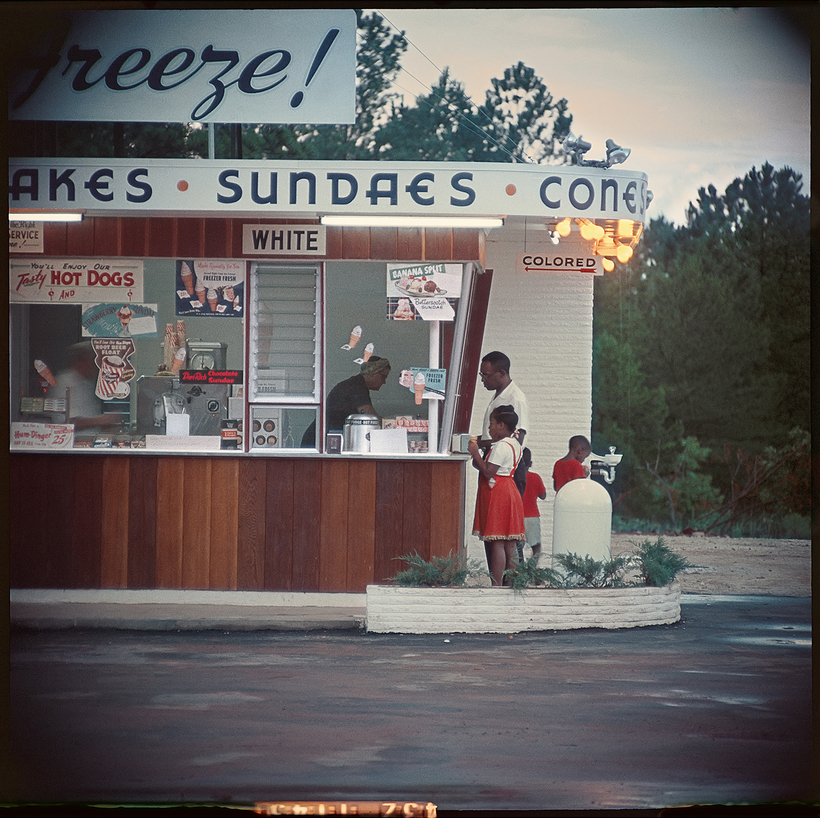“What I want. What I am. What you force me to be is what you are.” This is a statement from the unforgettable report on race and poverty, titled “A Harlem Family, 1967,” that was published in Life magazine on March 8, 1968. It was written by Gordon Parks to accompany his own photographs, a poignant visual diary that documented the daily struggle of the Fontenelles, a family locked in a system dead set against it. “Look at me,” Parks wrote, speaking for Blacks in America, “and know that to destroy me is to destroy yourself.”
By this time, Parks had been a staff photographer at Life for 20 years and was an esteemed photojournalist who covered sports, theater, and fashion as well as race and civil rights. His portraits of racism, however, are in a class by themselves. At the Alison Jacques Gallery in London, an exhibition of his 1956 series “Segregation in the South,” photographed for Life, was on view until August 8; beginning on September 1, the gallery is exhibiting Parks’s portraits of Muhammad Ali, work done between 1966 and 1970. Describing the intent behind “Segregation in the South,” Parks said “I felt it is the heart, not the eye, that should determine the content of the photograph.” And yet there is a masterful eye behind the lens. Parks, to borrow a phrase from Ali, floats like a butterfly and stings like a bee.
“Look at me,” Parks wrote, “and know that to destroy me is to destroy yourself.”
Take a look at the work “Untitled, Shady Grove, Alabama,” an image of a Black father buying ice cream for his children. Note the 50s-forward design of the building, the teak-wood panelling, the cool typeface that announces “SHAKES SUNDAES CONES”: postwar America is leaning into a future of plenty. The window where whites place their orders is on the facade, where all the signage—the options—are on view. The window with the sign “COLORED” is on the side of the building, set off, the word underlined with a red arrow (echoed by the red skirt of the daughter, the red T-shirts of the sons). Strangely, the family is corralled by white brick, as if frozen out of the American dream—the word “freeze!” shouts overhead. The stillness of the moment is punctuated by red, white, black—and only in the small sign that hangs between the white server and the Black family, picturing a banana split, do we glimpse the sweet ideal of equality: strawberry, vanilla, chocolate together in one bowl. Parks has given us so much to see. And to feel.
Laura Jacobs is AIR MAIL’s Arts Intel Report Editor

 Discover
Discover